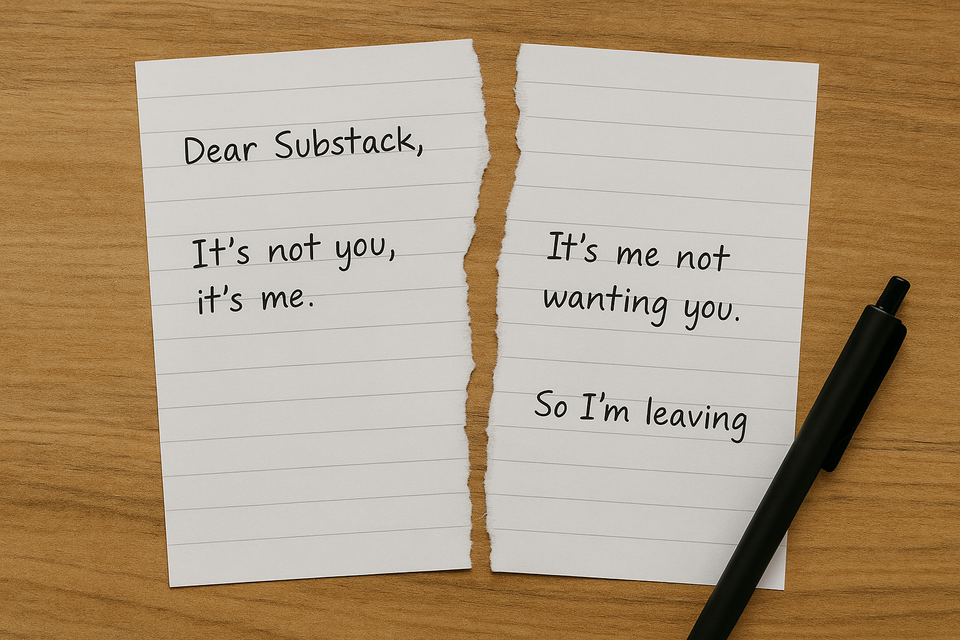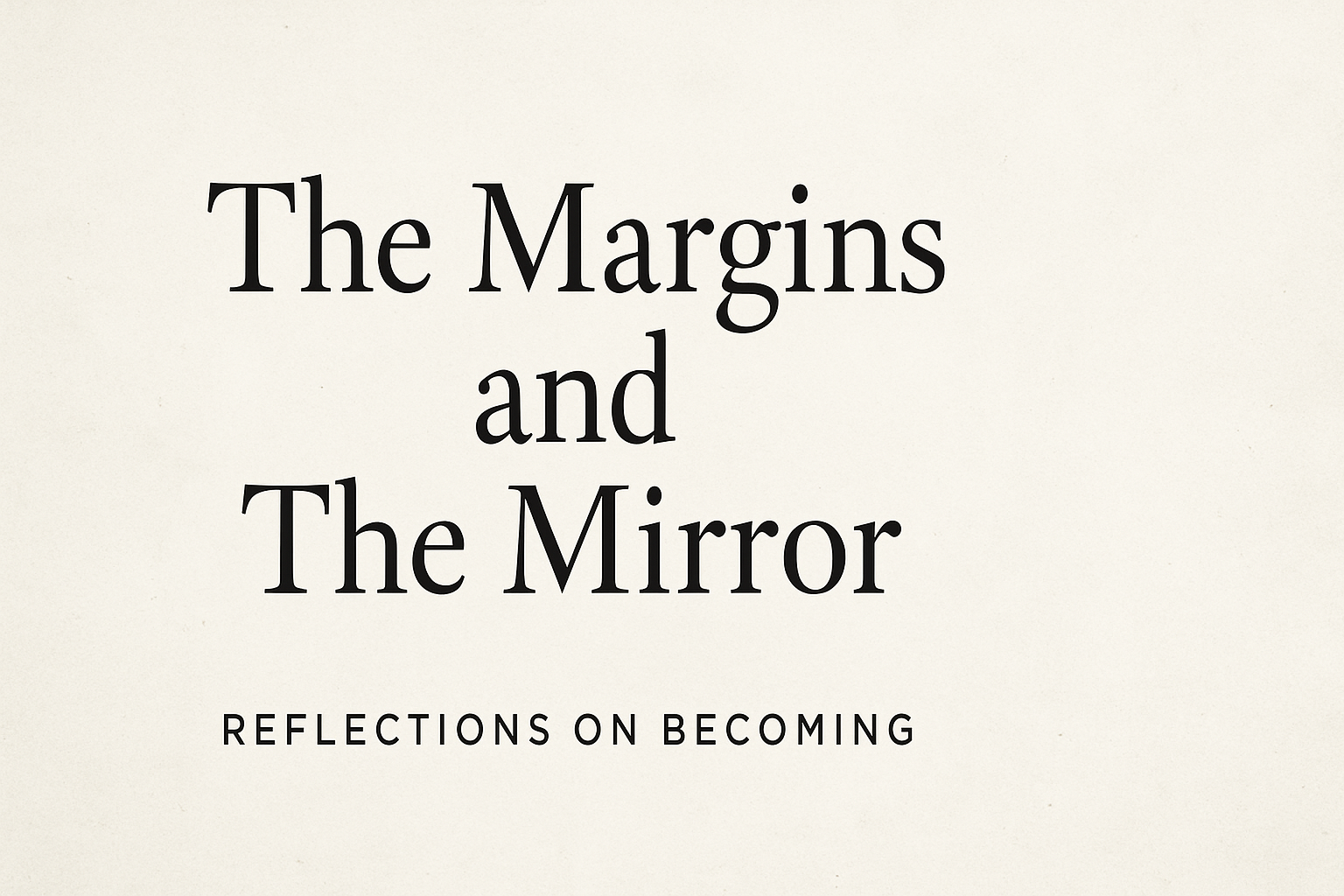Why I Ghosted Substack for Ghost

– A Breakup Letter from the Margins
It was the fastest breakup I’ve ever had. Four weeks.
That’s all it took for me to realize I’d mistaken constraint for simplicity, and minimalism for elegance. Substack, bless it, looked like a good fit at first—sleek, popular, easy to use.
But I’ve never been one to linger once I see the writing on the wall. And in this case, the writing looked nothing like mine.
So I ghosted.
And Ghost, well… Ghost got me.
I wanted a home for words. A sacred place for prose to stretch, wander, breathe. But what I got instead felt like a co-working space for content creators in mid-crisis.
🚩 The First Red Flag? The Exodus.
Substack had become a kind of Ellis Island for the exiled and the expelled—fired cable news anchors trying to stay relevant, podcast bro-ppinions on autoplay, and contract-breaching pundits rebuilding their personal brands with Substack as their post-cancellation sanctuary.
It was the platform of second (and third) acts.
But I wasn’t looking to reinvent myself after scandal.
I just wanted to write.
🐦 Then Came the Twitter Refugees
They flooded in like birds escaping a burning nest, scorched by Elon’s demolition of the Twittersphere. These folks—accustomed to dopamine hits and toxic discourse—sought new terrain.
And Substack welcomed them with open arms, quickly rolling out “Notes” (aka Twitter Lite), chat functions, podcasting tools, and soon, no doubt, a blinking cursor that finishes your thoughts with AI-fueled snark.
It didn’t take long for me to see it:
This platform wasn’t trying to serve writers—it was trying to save relevance.
It was performing fidelity, while actively courting chaos.
And here I was: a writer.
A thinker.
A builder of meaning from the margins.
Hoping for intimacy, creative clarity, and maybe even community.
Instead, I landed in a virtual Times Square of brand-building noise, where everybody was selling something and nobody seemed to be listening.
I knew then—this wasn’t personal.
Substack just wasn’t built to be loyal.
It was a performance platform for the already known, the almost-canceled, and the algorithmically aggressive.
It flirted with writers like me, but it was never going to be faithful.
It just wasn’t that kind of platform.
So I ghosted.
For Ghost.
Ghost didn’t beg.
Didn’t bait me with half-measures or quick fixes.
It offered space.
Control.
Clean design.
Full ownership.
No algorithm peering over my shoulder whispering,
“Maybe write about a trending topic instead?”
Ghost felt like what Substack pretended to be:
A publishing platform for people who care about publishing.
💡 And Here’s My Word to the Wise:
If you’re a writer—an actual writer, in search of quiet integrity, not clout—be cautious.
If your goal is to build something sacred, something lasting, tread carefully among:
- the high-visibility personalities
- the best-selling authors milking one more drip from their last hardcover
- the legacy editors trying to survive the death of print
- the ex-tweeters treating Substack like Twitter 2.0 with a newsletter button
Don’t be fooled.
That digital cacophony masquerading as opportunity?
It’ll drown your voice before it ever hears your story.
Run.
Run fast.
Don’t be afraid to Ghost the nonsense.
📬 If you followed me on Substack, welcome to The Margins & The Mirror.
This is where the writing lives now—unbothered, un-bossed, and un-beholden to the algorithm.
You’re invited to stay, subscribe, and breathe.
With warmth and clarity,
Robin

